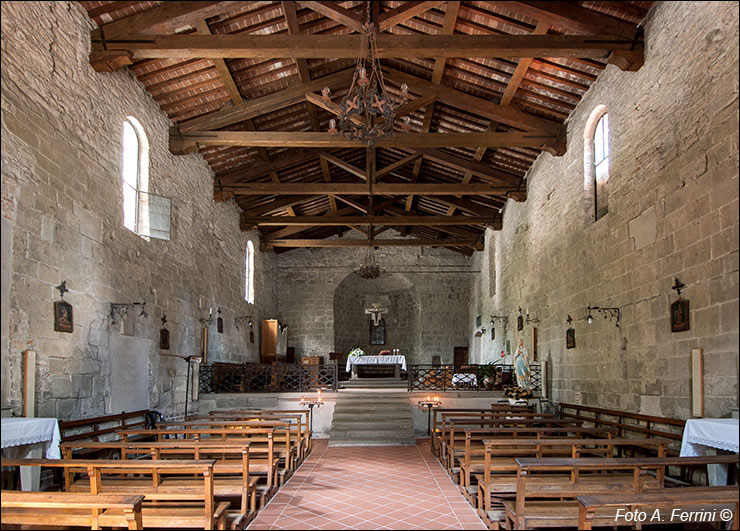Trekking nella Foresta Biogenetica di Badia Prataglia
itinerari nel Parco Nazionale delle Foreste Casentinesi, Monte Falterona e Campigna
Italiano
UN’ABBAZIA IN UN GRANDE PRATO
Quando parliamo di Badia Prataglia viene in mente un’accogliente centro turistico all’interno del Parco nazionale delle Foreste Casentinesi circondato da meravigliosi boschi di abete e faggio dove potersi cimentare in rilassanti passeggiate. Ciò è dimostrato dalle pagine di questa sezione web. Letteralmente Badia Brataglia significa abbazia in un prato. Tra il 985 e il 990, infatti, due monaci benedettini provenienti da Cassino fondarono una loro abbazia in questo luogo montano caratterizzato da una grande radura erbosa. Vale decisamente la pena, prima o dopo essersi cimentati in una delle escursioni presentate in queste pagine, visitare la chiesa di Badia Prataglia dedicata a Santa Maria Assunta e a San Bartolomeo. Il sacro edificio, ad unica aula e con la zona presbiteriale molto rialzata, presenta un’architettura molto sobria ed anche se completamente ricostruito nel secondo decennio del XIV secolo, è una chiara testimonianza di quella che fu l’antica abbazia che ebbe vita breve e con poca autonomia per la presenza del vicino centro religioso di Camaldoli che anche se sorto una trentina di anni più tardi, divenne ben presto più potente dal punto di vista politico ed economico. When we talk about Badia Prataglia, a welcoming tourist center comes to mind within the Casentinesi Forest National Park surrounded by wonderful fir and beech woods where you can try your hand at relaxing walks. This is demonstrated by the pages of this web section. Literally Badia Brataglia means abbey in a meadow. Between 985 and 990, in fact, two Benedictine monks from Cassino founded their abbey in this mountainous place characterized by a large grassy clearing. Before or after having tried one of the excursions presented in these pages, it is definitely worth visiting the church of Badia Prataglia dedicated to Santa Maria Assunta and San Bartolomeo. The sacred building, with a single hall and with a very raised presbytery area, has a very sober architecture and even if completely rebuilt in the second decade of the fourteenth century, it is a clear testimony of what was once the ancient abbey which had a short life and with little autonomy due to the presence of the nearby religious center of Camaldoli which, although built about thirty years later, soon became more powerful from a political and economic point of view.










































































